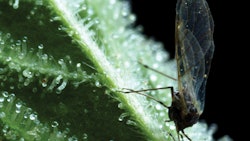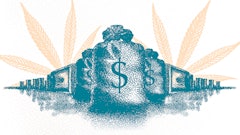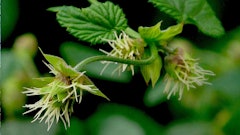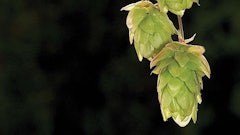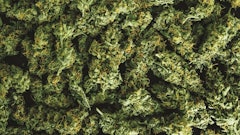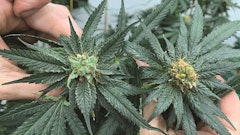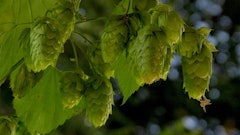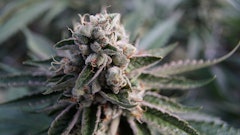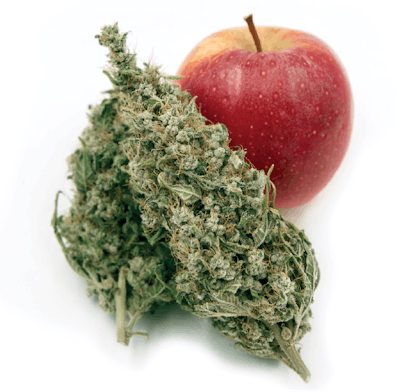
Expansion of the legal cannabis market will reduce the number of cultivars available to growers. The plethora of varieties available today come from small farmers. Larger operations will limit production to only their most profitable cultivars. This has been the natural economic model for all industrial agriculture—wheat, grapes, apples, etc. Agricultural expansion and normalization create a new selective process. The remaining cultivars become boutique, novelty and heirloom varieties with a limited market.
Currently, amateur and small-scale farmers are competing alongside an emerging industrial cannabis agricultural machine. As the machine gathers momentum, present-day prohibition-based business models and profit strategies are becoming irrelevant. If we follow the example set by previous plant-based commodities as cannabis is normalized worldwide, it will be increasingly grown by larger farmers in regions where the best quality can be grown for the lowest price.
Before the dawn of the industrial revolution, agriculture was a regional industry subject to the limitations of favorable climate, safe storage and localized transportation. Localized natural and human selection created great genetic crop diversity, as well as many options for modern plant breeders to choose from. The main limitation was lack of commercial access to large markets.
In the Johnny Appleseed era of the 19th century, for instance, thousands of apple varieties were grown in the U.S., though each one may have only been grown within a particular region, or isolated on an individual farm, or possibly even confined to just one tree. Apple seeds (as well as cannabis seeds) are extremely heterozygous (containing genes with differing alleles), which leads to extreme variations—both favorable and unfavorable—in the offspring.
Even if you grow a nice, big, healthy tree from the seed of a scrumptious apple, that tree will likely produce fruit that tastes nothing like the fruit from which the seed came. Careful selection, breeding and asexual propagation of selected apple cultivars ensures that their unique and highly prized fruits are widely available. Select cultivars serve as the farmer’s brands that can be multiplied for mass production as the market demands.
Early in American history, apples were grown predominately for hard cider production. A highly inconsistent heterozygous seed crop could still produce an acceptable alcoholic beverage. Once apples became a staple in our diet, farmers needed to grow a limited number of grafted clonal varieties in order to meet consumer demands for consistency and quality.
As industrialized agriculture spread (partially attributed to Johnny Appleseed's introduction of apple trees to a number of states in the U.S.), the selective forces in crop improvement changed dramatically. Crops were no longer produced only for a local market, but had become international commodities, bought and sold worldwide. Agricultural produce had to satisfy many criteria to meet this new market’s standards. Traits that may have been appealing to those in one region may differ greatly from those popular in another region. Consumer choices became less diverse, and at the same time, agribusiness dispersed whichever cultivars were accepted by the apple industry over a much broader geographical area.
If a farm family was attached to a particular cultivar, then they kept it alive as long as they could. But the eventual encroachment of modern living pushed the small family farmer to shop at the grocery store and, in doing so, eliminated much of the need to have that old apple tree in the backyard. Because those heirloom trees were all one-offs or clones (sound familiar?), when it was chopped down to make room for the new garage, its unique varietal characteristics died with it.
We ended up with markets across the country filled with Red Delicious and Granny Smith apples—until more discerning and educated consumers and apple farmers began to look backward, inward and onward for new varieties. Apple cultivars like Fuji, Pink Lady, and Honeycrisp are now common in urban markets around the world. Because of the interconnected nature of our modern lives, the once exclusive and secluded is now widely shared and broadly dispersed. The consequences are positive and negative.
Local food production was a necessity in the pre-industrial era, just as localized cannabis cultivation was a necessity during the prohibition era. In the same way food crops were confined to how far and long they could travel without spoiling, cannabis is confined by the pressures of its illegality. In our modern cannabis market, we have the good fortune of enjoying a vast array of medical cannabis varieties.
Though many cannabis varieties share common ancestors and a somewhat limited gene pool, great diversity still exists in chemical phenotypes, producing an array of many different compounds with varying medicinal effects. A number of these unique varieties share overlapping favorable qualities and will likely become economically redundant. With the potential to genetically blend varieties, as well as isolate extracts that may later be reformulated, the present-day excess of different varieties may be hindering progress toward normalization. A diverse cannabis industry should be structured around modern cultivars that can be grown from seed or cuttings with relative consistency.
Cannabis has proliferated our collective consciousness once again. The decades-long isolation of clandestine breeders, followed by the recent wildfire of rapid dispersal, has created more strains and names than any novice consumer (or even expert enthusiast) can keep track of. Most of these varieties will surely be absorbed into the modern agricultural machine, resulting in what we hope will eventually be some standardized system. We may have already reached a similar number of cannabis varieties as we once had of apples, but we arrived here by a different path. Cannabis is already a big, semi-international commodity, and someone will likely promote the next Red Delicious cannabis equivalent and push it on us all.
Increasing Genetic Variety
We can maintain and even expand diversity within the cannabis gene pool by encouraging the resurrection of the nearly decimated narrow leaflet drug varieties. Another way to encourage evolution of the market is through a deeper knowledge of cultivation, processing and storage. Through collaborative efforts within the industry, we can establish what the most desirable chemotypes are for consumers, as well as other agronomic traits desired by growers. Other agricultural crops use advertising, licensing agreements and other approaches, in addition to cultivar recognition and status, to create and protect their brand’s uniqueness. If an appellation system like the wine industry is adopted for cannabis products, we may see greater varietal diversity between regions, as well as regional variations in growing, processing, packaging and distribution strategies.
Each cannabis variety produces a slightly different psychoactive effect. We feel that, if given a well-characterized spectrum of medicinal properties to choose from, the public would be better able to draw from a smaller and more refined pool of cultivars to select their desired effects. It seems many consumers get lost in the present-day confusion and end up limiting their selections just to be able to more simply attempt to satisfy their own therapeutic needs.
The issue is: Who will decide what cultivars will be grown in the future? Agribusiness, of course! For this reason, we must preserve the diversity and selection of varieties that we currently enjoy. With a healthy, thriving and diverse cannabis gene pool, our community is better equipped to select appropriate cultivars for future needs. The challenge is to collectively choose important plants and not overlook others. If we compromise the genetic diversity of cannabis before we can understand its true value, then we may well become another Red Delicious—or rather, Blue Dream—industry.









